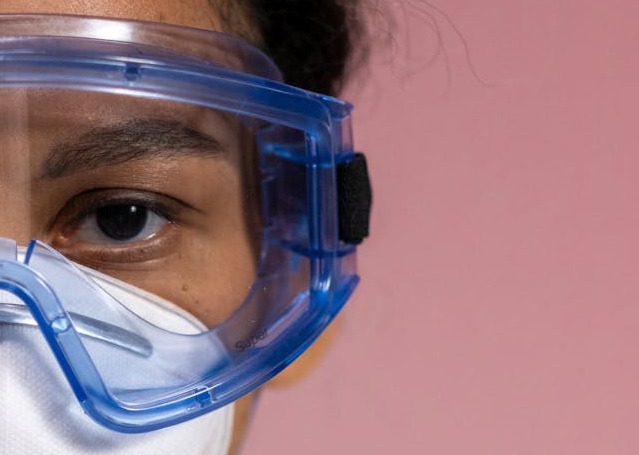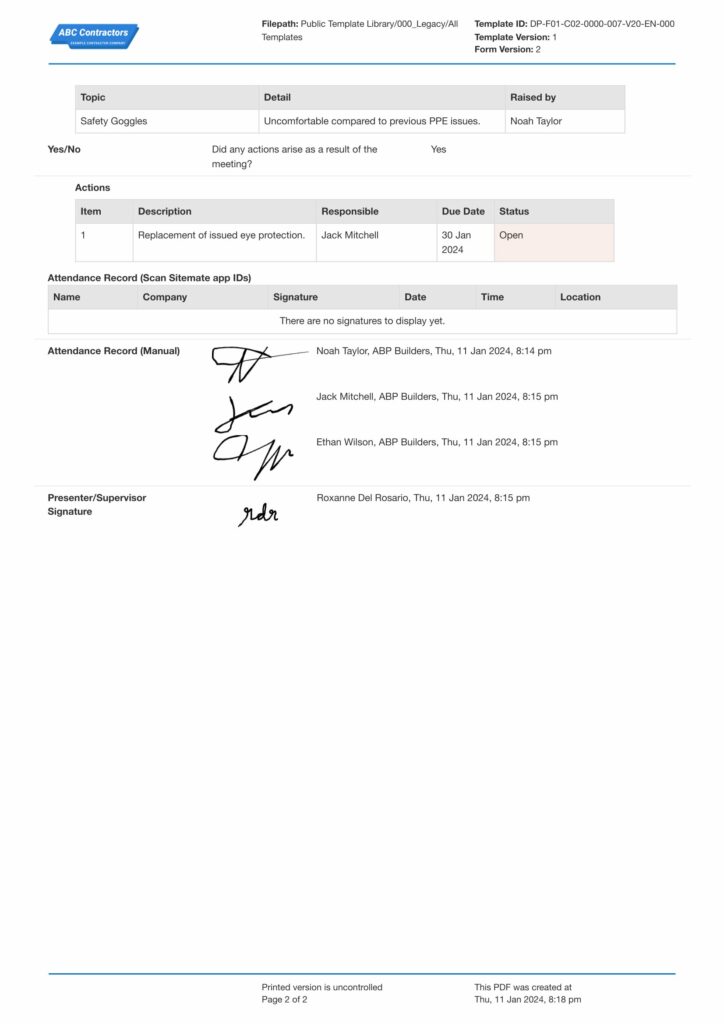Dashpivot Article – OSHA Eye Protection
OSHA Eye Protection
In this post we will focus on OSHA’s Eye Protection requirements, the most effective ways to comply with these requirements, and cover other important details about eye protection in general.

Why is OSHA Eye Protection important?
Occupational Safety and Health Administration OSHA imposes standards that ensures the workers who went to work that day goes home with the same exact body parts in the same condition after work. They enforce standards for employers to protect the critical parts of an individual’s body like the worker’s eyes that sees the job that they’re doing and one which is also vital for everyday task.
The eyes of a person are also clearly exposed to different workplace hazards and according to OSHA evidently thousands of people are blinded each year from work-related eye accidents. National Institute for Occupational Safety and Health (NIOSH) also states that a workplace related eye injury cost of an estimated whopping $300 million per year in worker’s compensation, medical treatment, and decreased output that could have been prevented by imposing eye protection and precaution in the workplace.
Workplace related eye injury is anything from chemical burn, foreign objects entering the eye, blunt trauma or when an object or part of a machinery or tool hits the eyes, radiation and many more. Eye injuries are certainly painful and damaging and can affect the workers and their dependents in the long term.
What does OSHA require for Eye Protection in the workplace?
Perform Hazard Assessment first
Determining the workplace safety of the workers should start with hazard assessment. As required by OSHA, employers should assess the workplace to determine if hazards are present or are likely to be present and then work from there. This means walking through the process and going through the job steps to understand what are the risks your workers are exposed to and to understand what controls can you design to mitigate those risks along with necessitating the use of PPEs for the eyes where applicable.
One easy way to do this is by making use of a digital hazard assessment form to make it easy to go through each job step by navigating through your phone or tablet. It is also worthy to note that OSHA requires the hazard assessment will be certified through a written certification that identifies the workplace evaluated, and it should include the date/s it was certified or assessed which makes using a digital assessment to be an efficient tool for hazard analysis.
Choose the appropriate eye protection
OSHA in general requires employer to make sure all affected employee uses appropriate eye or face protection when exposed to eye or face hazards from flying particles, molten metal, liquid chemicals, acids or caustic liquids, chemical gases or vapors, or potentially injurious light radiation.
How appropriate is appropriate eye protection?
Below is a summary of OSHA’s set standard for eye and face PPE with guide on how to comply.
- Proper fitting protective eyewear – eye protection should properly fit the worker that it won’t be disturb their vision when working. OSHA has put an emphasis as well for those that are already wearing an eyewear or prescription glasses, as eye protection will be worn over it, it should be in proper position of the prescription lenses or the protective lenses and they should be able to see as comfortably with their lenses on.
- Eye protection with side shields – If workers are exposed to flying objects or debris eye covers should have side protection too to protect the side of the eyes or the whole face. These situations are common in workplaces that does construction work , woodwork, metalwork, masonry and etc. as these jobs have the tendency of small particles like chips or dusts to propel in the air and get to the eyes.
- Eye protection should have the manufacturing identification - Eye and face PPE like glasses or goggles should have labels to identify the manufacturer to easily determine who produced the product and quickly perform quality inspection, this is in conjunction with American National Standards Institute which functions to coordinates voluntary standards for the United States.
- Eye protection in the workplace should protect the eyes from light radiation–To protect the eyes from radiant energy or light radiation, eye protection should have appropriate shade numbers. There is a listing from OSHA for various operations like shielded metal arc welding, gas metal arc welding or plasma arc welding that details the minimum protective shade.
- Eye protection in the workplace must comply with ANSI American National Standards Institute standard for safety glasses. It should be the following criteria: ANSI/ISEA Z87.1-2010, ANSI Z87.1-2003, and ANSI Z87.1-1989 (R-1998). Normally glasses will have these labels which indicates that it met the ANSI standards i.e. Z87.1 is the standard for impact protection.
How to effortlessly and effectively comply with OSHA?
While this article is generally about OSHA’s eye protection, let’s holistically look at your company’s safety management system and discuss way to effortlessly and effectively comply with OSHA. Compliance for regulations from OSHA is in fact easy to follow if it is already part of your culture at work. In the event of an external audit for your workplace, having an already established safety culture and an intelligent quality and safety management system would definitely pay off. If you’re not quite there yet, here are a few tips that would help in your approach to streamline your management systems:
Adapt OSHA’s safety training in your workplace
What better way to easily comply to OSHA’s regulations when you’re already trained to do the work their way. OSHA has training requirements and resources available and this will help your company to effortlessly comply with standards not only for eye protection but for all safety standards that applies. Safety trainings are usually designed according to the company’s needs or recent incidents and company-wide safety controls but adapting OSHA’s safety training and having standards already integrated in your worker’s mindset makes the safety protocols compliant already. One of the ways to do this is to have your technical trainers be trained by OSHA so that they can develop a site-specific training to meet the requirements by OSHA.
Perform a Personal Protective Equipment (PPE) Assessment
According to OSHA’s requirement: Employers must institute all feasible engineering and work practice controls to eliminate and reduce hazards before using PPE to protect against hazard. When engineering and work practice controls are already instituted, ensure to perform a PPE hazard assessment to identify what PPE is necessary and how to properly wear, take it off, maintain or inspect them. The PPE assessment is typically a set of questions answerable by yes/no itemised per body part and how can they be affected in the work and doing this will intuitively make your PPE supplies in the workplace already compliant.
Hold digital Toolbox Talks in the workplace
Toolbox talks are proving to be very effective in many workplaces particularly in construction and manufacturing as this gives workers guidance and reminders for the work they are about to do and in nature is also compliant to OSHA’s requirement for job briefing. See this form about Toolbox Talks in Eye Protection – it started with the dangers in the workplace, the controls that were set, and a section to demonstrate these controls like the inspection of eye equipment that are used by the crew.
This document is created using a toolbox talk software that you can utilise to efficiently create and customise your company’s toolbox talk and other safety documents and records but ultimately for eye protection–this will be a big precautionary step to remind your workers on the protocols and equipment used to prevent eye injuries. And, when you’re done with the talk, make use of the software’s feature to conduct attendance through contactless QR code scanning.
Toolbox Talks in Eye Protection
See this form about Toolbox Talks in Eye Protection.

Use this Toolbox Talk on Eye Protection for FREE
Digitalised your safety management system
Digitalised your whole system not just one document and this is not just for OSHA but there are just moments in the workplace where it’s difficult to organise the safety efforts even when there’s already a system in place. Now most organisations already have a good safety management system that outlines the safety policies and risk management but what’s usually lacking is a smart technique to run the documentation workflows and simplify the processes without the need to do things manually or use multiple complicated apps. With this, we recommend getting a smart safety management software to create documents, customise forms efficiently through a drag and drop system, simplify approval workflows and just put everything in one place. This way, from your laptops or mobiles you’re able to locate your toolbox talk for eye protection, for ladder safety, make your hazard assessment, create control plans and effectively improve your safety management system.
In Summary
So what did we cover in this article about OSHA’s eye protection? We covered a lot by answering these questions on why is OSHA eye protection important by looking at its impact and then answering what does OSHA require for eye protection in the workplace for us to get a summary with examples to get a better view of how this would look like when complying and finally answering the question on how to effortlessly and effectively comply with OSHA by providing three good tips (1) Adapt OSHA’s safety training in your workplace, (2) Hold digital Toolbox Talks in the workplace and (3) Digitalised your safety management system.

Site diary template
Complete and organise your daily diaries more efficiently.

Meeting Minutes template
Capture, record and organise those meeting minutes.

Progress Claim template
Streamline and automate the progress claim process to get paid faster and look more professional.

